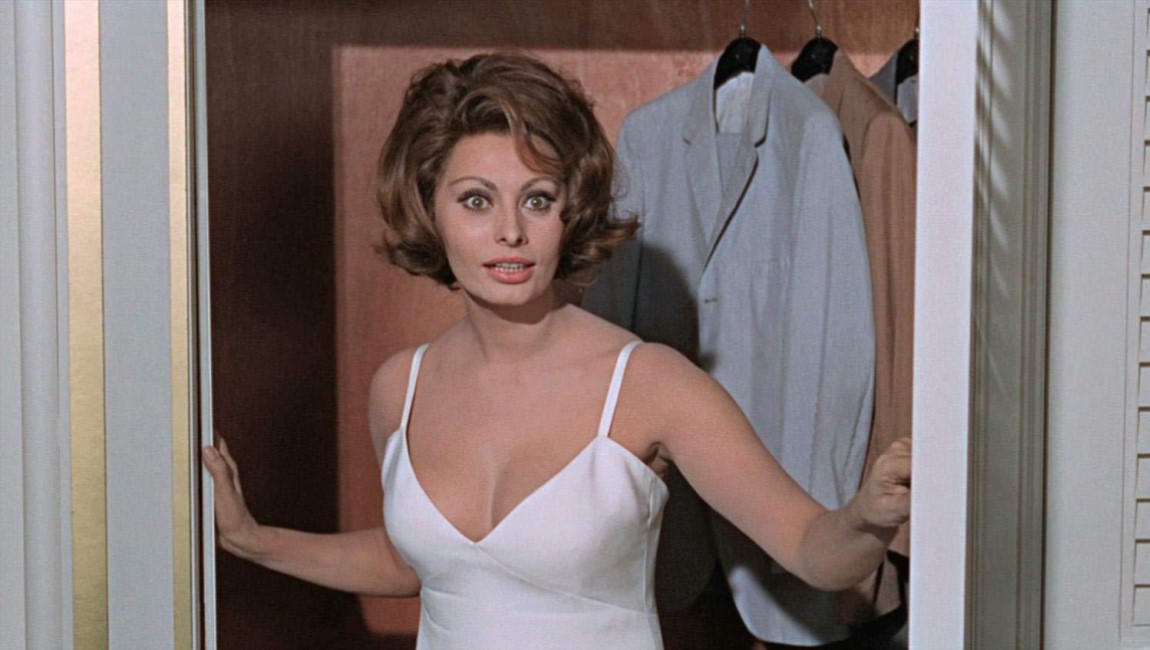Is there a greater rags-to-riches story than Charlie Chaplin’s? A real-life tramp, Chaplin grew up dirt poor on the streets of London. The son of two destitute music hall entertainers (dad an abusive alcoholic, mom committed to a mental institution), as a child, Chaplin showed promise performing stage comedy and working the music hall circuit himself with his brother, Sydney. This would lead to a few tours of North America with a vaudeville troupe and then a contract with Keystone Studios. By the time Chaplin was 25, the former street urchin had become a bona fide movie star.
More than that, at his peak, Chaplin was almost certainly the single most famous person in the world — a global cinema superstar. But just as inconceivable as his rise was the precipitousness of his subsequent fall from grace. Dogged by mounting controversies, from scandalous tabloid romances to accusations of communist sympathizing, public opinion gradually began to turn on Chaplin, especially as his films grew darker and more political. His 1947 masterpiece Monsieur Verdoux was the beginning of the end for Chaplin in America — his sobering reflection on the West’s descent into fascism and the use of the atom bomb did not land well with an American public ready to celebrate the end of World War II. It didn’t help matters that Chaplin had done away with his beloved tramp character. Verdoux bombed, Chaplin continued speaking out against HUAC and anti-communist persecution, and five years later, while attending the London debut of his next film, Limelight (1952), his re-entry permit was revoked, and he was effectively banned from the United States. In less than three decades, Chaplin went from the most beloved man in America to an exile.
This historical and emotional context powerfully undergirds Chaplin’s final few films. Limelight is the most explicitly autobiographical of these, concerning a once-popular clown who has fallen into obscurity, but it’s also not hard to see the real-life resonance of A King in New York (1957), wherein Chaplin stars as an ousted European monarch taking refuge in America. Finally, there’s A Countess from Hong Kong (1967), Chaplin’s last and most reviled film. Much like his other late work, it often calls back to earlier moments in Chaplin’s oeuvre: in particular, Countess bears a clear kinship with one of his first features, A Woman of Paris (1923). Not only do these two films share the unique distinction of being the only directorial efforts in which Chaplin himself does not star (although he does make brief cameo appearances in both as a porter), but they’re also connected by their female protagonists, each a woman of low morals who has attached herself to a high society man in an attempt to transcend her socioeconomic class. Edna Purviance’s woman of Paris began as a poor village girl, who flees her stringent father and, it’s implied, takes up as a prostitute in Paris. Though she now lives a life of luxury among the Parisian aristocracy, she is unable to fully shed her origins and become a true member of that class — a reflection of Chaplin’s own anxieties at the time, his feeling of being an outsider among his wealthy peers.
The titular countess of Chaplin’s later film has a more complex backstory, and actually represents something of an inversion of Purviance’s character. In fitting with Chaplin’s displaced position, hers is a riches-to-rags story, rather than the other way around. The film opens with images of the streets of Hong Kong, “overcrowded with refugees” as a result of two world wars. The camera soon finds itself in a red light district, where an American navy man comes across a sign advertising dances with a countess. We learn from this opening scene that there is an abundance of “Real Live Aristocrats” here — they’re the descendants of Russian oligarchs who fled the Bolshevik Revolution, first to Shanghai and then to Hong Kong. While of royal blood, these women are countesses in name only, as they’re now destitute and passport-less, with many resorting to prostitution to survive.
One of these countesses is Sophia Loren’s Natascha, and much like Purviance, she embodies some of Chaplin’s class anxieties 40 years previous; Loren is not just filling the role of the tramp, she is also representing Chaplin the exile. Her counterpart is Marlon Brando’s Ogden, an American diplomat docked overnight in Hong Kong on his way home from touring the world. Ogden goes out on the town that night with a friend of his oil baron father, who introduces him to Natascha. Though they do form something of a connection, it’s nothing that would warrant further contact, and Ogden seems to have nearly forgotten her the following morning — until he finds her hiding in the closet of his cabin, attempting to stow away and escape to America. What follows is a series of slapstick scenarios, most of which involve Natascha and Ogden running back and forth between different rooms of his suite to avoid detection, and while initially at odds, they gradually begin to fall for each other. Although Chaplin is working with color and the widescreen format for the first time in his career, his film is still charmingly old-fashioned. The set-ups are simple, with the bulk of the film contained to Ogden’s two-room cabin. One can sense some of the Chaplin of the Essanay and Mutual days, mining for all of the permutations of gags these two rooms and their half-dozen doors can provide.
As we learn about Ogden, we realize that he may embody another portion of Chaplin’s personhood. A careerist politician, he’s also in the midst of a deeply unhappy marriage and plans to get a divorce upon his return to the United States. At the start of the film, he’s hopeful that a Secretary of State nomination may be coming his way; instead, he learns partway through his trip that he’s been named to the much less glamorous position of ambassador to Saudi Arabia, and with that announcement comes a directive from Washington that he is not to go through with his divorce, for PR purposes. He’s devoted himself to his career, to being a public figure with all of the expectations that come with it, and he has done so at the expense of his own happiness.
It’s easy to see how Ogden’s dissatisfaction might have emerged out of Chaplin’s own struggles with life in the public eye — though his political commentary and increasingly challenging films might suggest otherwise, Chaplin wanted nothing more than to please his fans, and the loss of public favor was devastating, haunting him for much of his life. Ogden is introduced to us monologuing about world peace, a clear nod to the politicized sermons of The Great Dictator or Monsieur Verdoux. In that sense, he’s further aligned with the figure of Chaplin, however, his monologue (and by extension that of Verdoux and the Jewish barber) is also amusingly undercut when it becomes clear that he’s simply preparing a speech, not speaking from the heart. The actual content of that speech is not treated with any seriousness by the movie, not in this early scene nor later when he delivers it at a press conference. This playfulness is characteristic of the film’s light tone, especially in relation to those that precede it.
And indeed, A Countess from Hong Kong is the most optimistic of any of Chaplin’s late films, all the way through to its conclusion. There are numerous dancing scenes interspersed throughout the film — from the opening, with the anonymous sailor and the Hong Kong dance hall, to Ogden and Natascha’s night out on the town, to a hijinks-heavy ballroom dance aboard the ship — and each is united by a sense of artifice, whether it’s the transactional pseudo-romance of a dance with a prostitute, or the phony conversations and conventions of a high society dance floor. These moments all lead to the final scene: our lovers have parted, Ogden returning with his wife to the mainland, and Natascha remaining in Honolulu, having successfully acquired a green card. In one of the most arresting images of Chaplin’s career, we see Natascha gazing longingly out of a restaurant window at the departing boat, the window’s glass simultaneously reflecting images of couples twirling on the dance floor behind her. But, of course, Ogden hasn’t left on the boat, and soon he weaves his way across the dance floor, and finds Natascha, whereupon they embrace and join the other dancing couples.
Donna Kornhaber argues, compellingly, in her book Charlie Chaplin, Director that this conclusion is a cynical one, that Natascha was always using Ogden as a pawn and that their coming together here is merely a reiteration of those transactional dances that came before. But I see it differently. Things do close just as they began, but something has changed — look no further than the tears shimmering in Loren’s eyes. Unlike the romance between Purviance and Adolphe Menjou in A Woman Of Paris, which was never able to rise above their class constrictions, here Ogden turns his back on societal expectation, leaving his wife and career in order to obtain true love, real happiness. “I would rather be happy than president,” he remarks, a straightforward sentiment, but one made considerably more powerful when we remember that Ogden is serving as a figure for Chaplin’s unease with public expectation. These two sides of Chaplin’s personhood — the exiled tramp and the inhibited diplomat — are finally reconciled. One imagines that Chaplin regrets not being able to let his own figurative boat sail away without him, to let the burden of public opinion go, and instead prioritize his own happiness. A Countess from Hong Kong is a quintessential late film, not just because of its peculiar style, but because it carries with it that special disposition of an aging master in reflection. It’s hard not to be moved by a 78-year-old man, one who’s been on top of the world and at rock bottom, striving to find peace strictly on his own terms.
Part of Kicking the Canon — The Film Canon.
Published as part of InRO Weekly — Volume 1, Issue 17.







